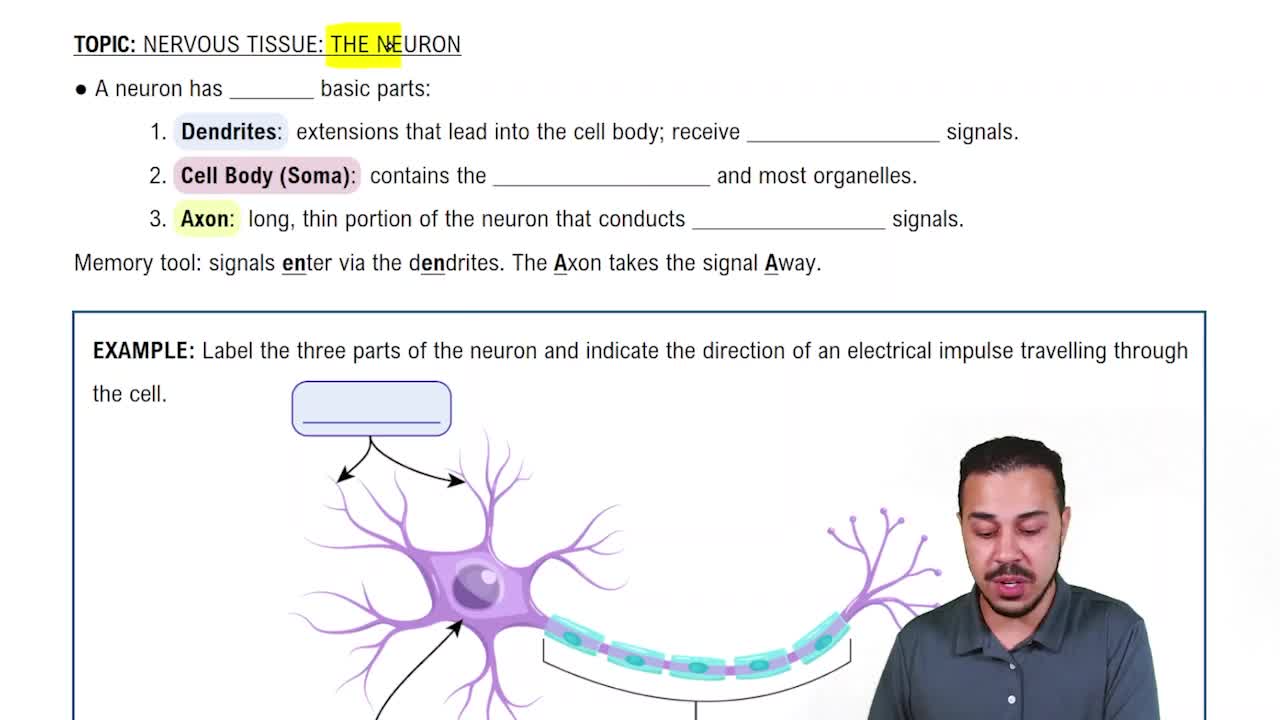Here are the essential concepts you must grasp in order to answer the question correctly.
Neurons
Neurons are the fundamental units of the nervous system responsible for transmitting information throughout the body. They communicate via electrical impulses and neurotransmitters, allowing for rapid signaling between different parts of the body. Neurons are specialized for processing and relaying information, playing a crucial role in reflexes, sensory perception, and cognitive functions.
Recommended video:
Supporting Cells (Glial Cells)
Supporting cells, or glial cells, provide essential support and protection for neurons. They outnumber neurons and perform various functions, including maintaining homeostasis, forming myelin, and providing structural support. Glial cells also play a role in the immune response of the nervous system and help in the repair and maintenance of neural tissue.
Recommended video:
Nervous Tissue Structure
Nervous tissue is composed of two main types of cells: neurons and glial cells. This structure allows for efficient communication and support within the nervous system. Understanding the distinct roles of these cell types is crucial for comprehending how the nervous system functions as a whole, including how it processes information and responds to stimuli.
Recommended video:
 Verified step by step guidance
Verified step by step guidance


